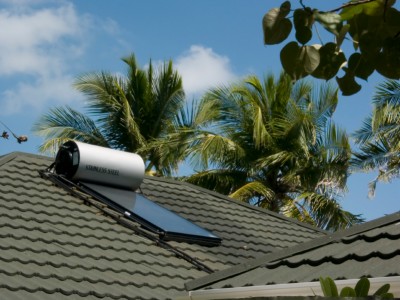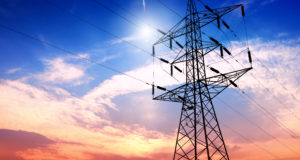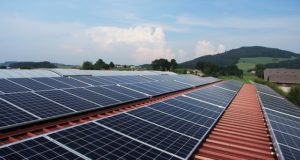Those who choose to live off the grid are no stranger to hard work, but there are always new projects around the homestead that can substantially increase your quality of life while simultaneously saving a lot of money. Some estimates conclude that heating water is responsible for almost 30 percent of any given family’s energy budget. There is just no reason to pay for that service when several alternatives—such as solar water heaters—can heat enough water for personal use. For those of you who have already installed solar water heating systems and use electric circuits as a backup heater, there are some cost efficient ways to increase the effectiveness of your solar water heating system.
In addition to the (substantial) monetary incentives to begin using a solar water heating system, there are, of course, environmental benefits. If you switch to a solar water heating system, your use of non-renewable resources will drop significantly; that number will approach zero rapidly if your backup heating system is a woodstove or firebox rather than occasional use of a conventional, coal powered system.
Gas tankless water heaters are technically “cost-effective” alternatives to conventional water heating systems, but they are hardly worth the investment. Consumer Reports indicates that it can take over 20 years to break even because the installation cost of a gas tankless water heater can be so high. Other tankless heating options present similarly high installation costs, with a period of quite some time to make that money back in savings. By far the cheapest option, solar water heating systems present their own challenges. Namely, not all solar water heaters can heat water quickly enough to meet your water needs; however, switching to a solar water heater would be a great incentive to cut down on your water usage.
There are different ways to construct homemade solar water heaters, each tailored to your lifestyle and the type of work you are willing to put into the initial process. Depending on location, altitude, and winter temperatures, not every home will be able to run entirely on a solar water heater because the hot water storage unit will be unable to sustain a sufficiently high temperature 24/7. If you live in an area where you are unable to use a solar water heater to meet all of your energy needs (or it is not an option for most of the winter) solar water heating systems can still be great investments. At the very least, it is a cheap alternative to conventional water heaters for the rest of the year. More likely, you will be able to utilize a solar water heating system at least during winter days (though it is less likely that you will get much return in the evenings or at night) when your solar collector is able to warm up enough to heat the water.
Harness the power of the sun when the power goes out…
Installing New Solar Water Heating Systems
If you are currently relying on conventional methods to heat your home, you may not be ready to take the full plunge into the world of solar water heating. That is completely understandable, but there is no reason not to explore solar water heating for at least some of your water needs, like bathing and cooking. Solar water heaters are great (and extremely efficient) choices for these types of water needs. Because of the logistical problems that arise in particularly cold areas of the nation, solar water heating is likely not a similarly effective choice for heating your entire home.
Simple solar heating systems are a great bet for beginners: it is almost as simple as setting up a wooden box with copper pipes inside. It sounds too good to be true, but solar water heaters can be extremely efficient and straightforward to install.
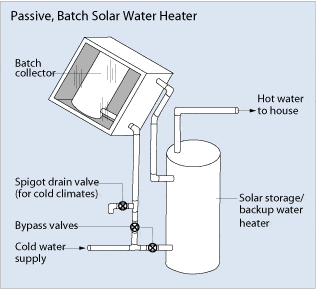
image courtesy of the U.S. Department of Energy
This is called a “passive system,” because there is no pump system designed to move the heated water. Rather, the hot water rises to the top of the container naturally, and the cold water is then heated by remaining solar energy. If you live in a warm (or relatively mild) climate, passive systems are a safe bet, because your water will almost universally be able to reach the ideal temperature. If you live in a colder climate, you will need to set up an “active system” to account for times when the sun’s energy will simply not be enough to heat enough water for your home.
Passive systems are far cheaper to install than active systems, and they need almost no maintenance or upkeep over time. These are also called “close-coupled” solar water heating systems. Traditionally, the water storage tank is installed over the solar collectors; this is successful in warm climates because the hot water naturally rises into the water tank and no extra energy is needed to complete the process.
In passive systems, the water storage unit is stored on your roof. Because this container will hold such high volumes, it is important to check with a contractor to make sure that your roof is structurally sound enough to hold the container without giving in. Build a glass covered, wooden container that will be responsible for absorbing solar energy, and install copper piping within the container for water. As the box collects solar energy, water in the pipes will get heated. Hook this system up to a storage tank above the box (again, usually located on the roof) in order to ensure that heated water will rise into the storage tank as intended. Technically referred to as the “thermosiphon principle,” this just refers to the natural “heat rises” principle that you are familiar with.
Unlike passive systems, active heating systems do not rely on the natural flow of water to funnel heated water into your hot water
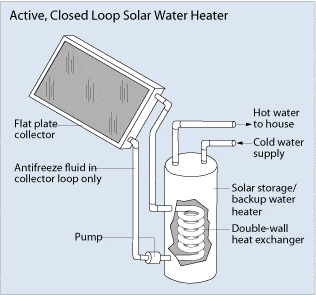
image courtesy of the U.S. Department of Energy
storage tank. Rather, active systems utilize pump/valve systems to circulated heated and unheated water within the system. As you can imagine, installing a system that necessitates a series of pumps is more costly than a passive heating system. There are some great benefits to active systems, however; their versatility is their main selling point. Because they do not depend on water rising into the hot water storage unit, they can be located almost anywhere. The versatility in placement means that you can hide storage tanks from plain view, rather than mounting the tank on top of your home. Active systems understandably also allow you more control over the system, because they necessitate electronic controllers to manipulate temperature settings.
Tips for Solar Water Heater Beginners
- Utilize your land and resources! Instead of paying outlandish prices for lumber somewhere else, get creative with lumber scraps around the house and see if you can manage to construct a solar heat collector from lumber scraps. Other preppers in your area are probably more than willing to lend a helping hand if you are looking to pick up particular scraps or resources for this project.
- Plan based on your environment! Talk to other people in your area who live off of the grid and investigate the problems they may have faced with solar water heating systems. If pipes in your area are prone to freezing, you will need to include a feature to prevent that from happening to your solar heating system. Not only will that put a startling end to your supply of hot water, at least for a time, it can have lasting damage on your pipes. Installing something called a “heat exchanger” in the water storage tank can provide an extremely useful service: rather than heating water within the tank and the solar collector, the heat exchanger prevents heat from seeping back out of the storage tank.
Ways To Improve Current Solar Water Heaters
- Consider hooking your solar heating system up to a wood burning stove. Because you will be unable to reliably heat water using solar energy when temperatures are particularly cold, having a backup system is imperative. Rather than relying on someone else to take care of it for you by simply reverting to old habits of electrical power usage, a wood burning stove can heat water just as well, and it will get you up and moving when you need hot water.
- Consider swapping out your modest water storage container for a (much) larger one. The bigger your hot water storage container is, the hotter your water will stay, and it will stay hot longer. This is technically referred to as “thermal inertia,” and it means that you can substantially increase the efficiency of your solar water heater without paying an inordinate fee.
- Do you know which direction your solar collector is facing? This factor, logically, can play a big role in how effective your solar heating system is. If you are located in the southern hemisphere, your solar water heat collectors should face north, and vice versa for those located in the northern hemisphere. Properly angling your collection box will decrease the amount of time that you need to heat water, and increase the general effectiveness of your home heating system.
- Copper is more expensive than some pipe alternatives, but this is one stage of development that you should not skimp on. Copper is such an excellent conductor that investing in copper water pipes will easily earn your money back for you down the line.
Produce Boiling Hot Water, Anywhere, Anytime With Absolutely No Power Whatsoever…
Connecting Your Solar Heating System and Your Woodstove
Why buy it if you can do it yourself? Like you, those who choose to live off of the grid are hardworking individuals who appreciate an industrious approach to any dilemma. As discussed above, hot water heaters will not always be able to heat the amount of water required by your household. Rather than choosing the easy way out and keeping a conventional system installed, connect your woodstove to your water heating system. You will be in total control of the system this way, easily able to stoke the fire if you need to heat extra water.
Buying a water heating attachment for your fireplace or firebox can prove to be pretty costly if you want one that will not put your whole family in danger. As an alternative, you can build your own and adhere to the most important safety standards. If you are building your own water heating attachment, you need to make sure that the temperatures outside the heater are hot enough to boil water. This is just a safety measure to protect yourself and other members of your family from dangerously high temperatures.
If you live in a particularly harsh climate and you have found that solar water heaters are not an effective way to heat water on a regular basis, you can permanently operate your water heater using your woodstove or firebox. Adding a control that allows you to turn water circulation on and off is a wise choice if you do not have a fire constantly burning in your home, as the water could end up heating the firebox, instead of the other way around.
If you like the idea of completely powering your hot water supply using a wood burning stove or firebox, it is important to plan ahead and know the limitations of such a setup. Water heated by a firebox or woodstove will continue to be hot for anywhere between 24 and 48 hours following the fire going out. If you operate a relatively efficient wood burning stove, you can heat up to 20 gallons of water per hour. That is not an insubstantial amount of water, but complete reliance on a firebox or woodburning stove will require you to plan ahead and ration your water usage carefully. You are less likely to jump into the shower on a whim, but you can truly enjoy the hot water knowing that you are responsible for the hot temperatures.
 Off The Grid News Better Ideas For Off The Grid Living
Off The Grid News Better Ideas For Off The Grid Living

